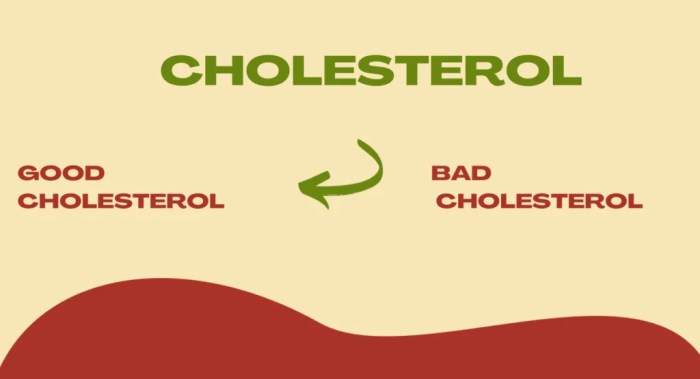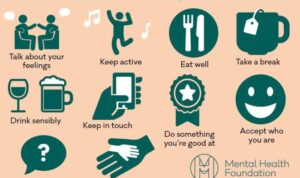Cholesterol management is crucial for overall health, impacting various aspects of our well-being. From understanding cholesterol basics to implementing effective strategies, this comprehensive guide dives deep into the world of cholesterol management.
Understanding Cholesterol
Cholesterol is a waxy, fat-like substance found in every cell of our body. It plays a crucial role in building cell membranes, producing hormones, and aiding in digestion.
LDL (Bad) Cholesterol vs. HDL (Good) Cholesterol
LDL cholesterol, often referred to as “bad” cholesterol, can build up in the walls of arteries, leading to atherosclerosis and increasing the risk of heart disease. On the other hand, HDL cholesterol, known as “good” cholesterol, helps remove LDL cholesterol from the arteries, reducing the risk of heart disease.
- LDL Cholesterol: Found in foods high in saturated fats like red meat, processed foods, and full-fat dairy products.
- HDL Cholesterol: Foods rich in omega-3 fatty acids such as fatty fish (salmon, mackerel) and nuts (almonds, walnuts) can help increase HDL levels.
Risk Factors for High Cholesterol

High cholesterol levels can be influenced by a variety of factors, both genetic and lifestyle-related. Understanding these risk factors is crucial in managing cholesterol levels effectively.
Impact of Genetics on Cholesterol Levels
Genetics play a significant role in determining an individual’s cholesterol levels. Familial hypercholesterolemia, for example, is a genetic condition that can cause very high levels of LDL cholesterol. Individuals with a family history of high cholesterol are at a greater risk of developing the condition themselves. Genetic testing can help identify individuals who may be predisposed to high cholesterol due to their genetic makeup.
Lifestyle Choices and Cholesterol Levels
Diet and exercise are two key lifestyle factors that can impact cholesterol levels. A diet high in saturated fats, trans fats, and cholesterol can raise LDL cholesterol levels, while a diet rich in fruits, vegetables, and whole grains can help lower cholesterol. Regular physical activity can also help increase HDL cholesterol, the “good” cholesterol that helps remove LDL from the bloodstream. Making healthy lifestyle choices, such as maintaining a balanced diet and staying active, can play a crucial role in managing cholesterol levels and reducing the risk of heart disease.
Cholesterol Testing
To monitor cholesterol levels, individuals can undergo different methods of testing, primarily through blood tests. These tests measure the levels of various types of cholesterol in the bloodstream and provide valuable insights into cardiovascular health.
Types of Cholesterol Tests
- Total Cholesterol Test: This test measures the combined levels of HDL (high-density lipoprotein), LDL (low-density lipoprotein), and VLDL (very low-density lipoprotein) cholesterol in the blood. It gives an overall picture of the cholesterol levels in the body.
- HDL and LDL Cholesterol Test: This test specifically measures the levels of HDL and LDL cholesterol in the blood. HDL is known as “good” cholesterol, while LDL is considered “bad” cholesterol.
- Non-HDL Cholesterol Test: This test calculates the total cholesterol minus the HDL cholesterol level, providing insight into the amount of potentially harmful cholesterol in the body.
Interpreting Cholesterol Levels
- Desirable Levels: For total cholesterol, levels below 200 mg/dL are considered desirable. HDL levels above 60 mg/dL are ideal, while LDL levels should be below 100 mg/dL for optimal heart health.
- High Risk Levels: Total cholesterol levels above 240 mg/dL, LDL levels over 160 mg/dL, and HDL levels below 40 mg/dL indicate a higher risk of heart disease.
- Triglyceride Levels: Triglycerides below 150 mg/dL are considered normal, with higher levels posing a risk for heart disease and other health issues.
Frequency of Cholesterol Testing, Cholesterol management
Regular cholesterol testing is essential for monitoring cardiovascular health and preventing potential risks. It is generally recommended to get cholesterol levels checked at least once every five years for adults over the age of 20. Individuals with existing heart conditions, diabetes, or other risk factors may need more frequent testing as advised by their healthcare provider.
Strategies for Cholesterol Management

To effectively manage cholesterol levels, a combination of diet, lifestyle changes, medication, and regular monitoring is essential. Lowering LDL cholesterol, also known as “bad” cholesterol, is a key focus in cholesterol management to reduce the risk of heart disease and stroke.
Tips for Reducing LDL Cholesterol Through Diet and Lifestyle Changes
- Eat a diet rich in fruits, vegetables, whole grains, and lean proteins.
- Avoid saturated and trans fats found in fried foods, processed snacks, and fatty meats.
- Incorporate heart-healthy fats like those found in nuts, seeds, and olive oil.
- Engage in regular physical activity to help lower LDL cholesterol and improve overall heart health.
- Avoid smoking and limit alcohol intake to further reduce cardiovascular risk factors.
Role of Medication in Cholesterol Management
Medication may be prescribed by healthcare providers to help lower cholesterol levels, especially when lifestyle changes alone are not enough.
- Common cholesterol-lowering medications include statins, fibrates, and bile acid sequestrants.
- It is important to follow the prescribed medication regimen and consult with a healthcare provider regularly.
Examples of Effective Cholesterol Management Plans
- A comprehensive plan may include a personalized diet and exercise regimen, along with medication, if necessary.
- Regular cholesterol testing and monitoring to track progress and adjust treatment as needed.
- Incorporating stress-reducing activities like yoga or meditation to support overall heart health.



